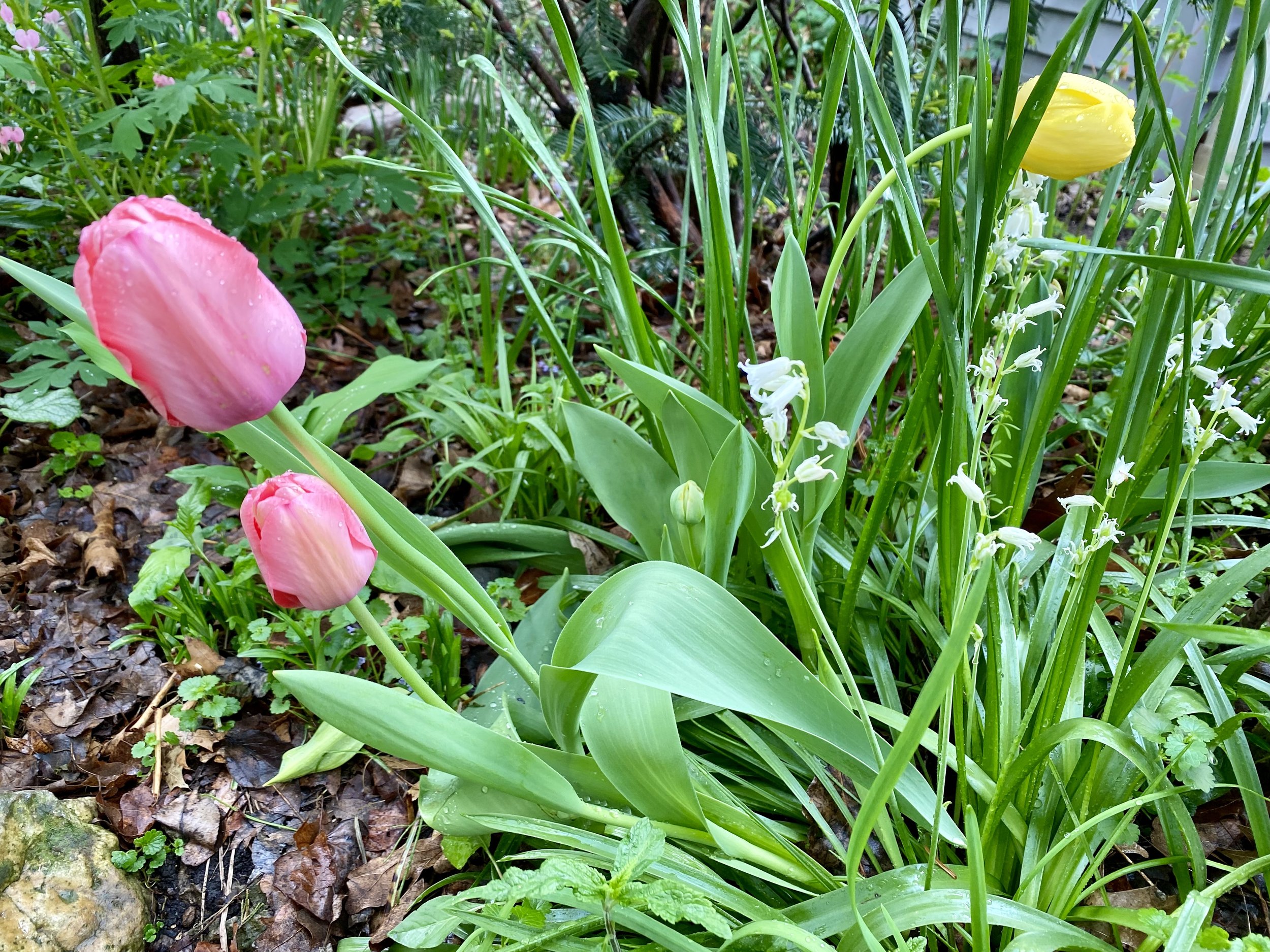Delicious Tulips
/Some of my Darwin tulips in bloom; deer missed finding this batch. (Charlotte Ekker Wiggins photo)
Delicious Tulips
Some of us hear, or have, the challenge of growing tulips without wildlife eating them but did you know tulips are edible by humans?
According to Bloomeffects.com, there is a Dutch tradition of eating tulip bulbs and petals that started during a famine in the last year of World War II.
December of 1944-45, a freezing winter fell over the Netherlands that would last multiple months. Unlike other countries such as France, German troops still occupied the Netherlands and enforced strict food rationing and restrictions on farming as a form of punishing the Dutch public for the government’s non-compliance. The combination created famine conditions that were known as the Hongerwinter (The Hunger Winter).
The war had put a temporary stop to tulip farming but there was a stock pile of unplanted tulip bulbs. The Dutch government began selling bulbs in grocery stores and publishing recipes in local magazines in an effort to overcome the famine.
Recipes included drying and milling the bulbs to make a flour for bread, tulip soup, and boiled tulips. Even Belgian actress and Hollywood icon, Audrey Hepburn, whose family had moved to the Netherlands during WWII, recounted eating tulips to survive.
Tulips are a member of the allium family like hyacinths and garlic. The bulbs have an onion-like flavor and the petals can taste like peas, cucumbers, or nothing depending on the tulip variety.
Always make sure to use unsprayed bulbs.
Remove the bitter, yellow core of the bulb as it is poisonous.
Consult your doctor if you have any health concerns before consuming.
Many years ago a family member made a meal out of tulips. Today I prefer to just enjoy their beauty.
For more cooking, gardening, beekeeping and easy home decor tips, subscribe to Garden Notes.














